Media | Articles
Upgrading the leaf springs on my 1987 Jeep Grand Wagoneer
Ever since I bought my 1987 Jeep Grand Wagoneer and began to modernize it, I’ve wanted to use the vintage Jeep as a tow rig for my 1978 Datsun 280Z on track days. While it certainly would have been simpler—and a whole lot cheaper—to purchase a 10-year-old SUV and slap on a hitch, there’s no rule that says tow vehicles have to be boring.
I made sure to bake in certain details to my project Jeep: Hydroboost brakes, a 3.73:1 rear gear ratio, and enough cooling for both the engine and the transmission to handle the relatively modest weight of my vintage Datsun. I also made sure that the truck’s AC blew cold. On a hot summer night, after a day spent baking inside the tin oven that is my Z, I want to haul home in some comfort.
Unfortunately, I overlooked a crucial area of my project—suspension—which put a serious damper on my towing plans. More accurately, I tried to save some cash with a workaround instead of doing things the right way from the start. The end result forced me to find an alternative tow machine at the last minute to save my final track date of 2022, teaching me an important lesson about not cutting corners.
Wag-sag blues
Anyone who has spent time around full-size Jeeps is familiar with the term Wag-sag, a gently sloping stance produced by rear springs suffering from three decades of gravity’s pull. Typically, Wag-sag manifests whenever there’s a bit of extra weight in the cargo area; sometimes, it’s visible even with passengers riding in the second row.
I was fairly certain that my own Jeep was riding on its original set of leafs, but, even when I packed the back to the brim with gear, my case of sag hadn’t seemed all that bad. This helped me justify the decision to replace only the rear suspension’s worn-out bushings and shocks (the latter with a new set of Bilsteins). Cost was also a motivating factor: if I replaced rear springs, I’d also have to do the fronts to avoid giving the truck a janky ride and a weird look. You have to pay for a lot of steel in a set of four new leaf springs, especially compared to what you’d pay for more modern, modestly-sized coils.
Marketplace
Buy and sell classics with confidence
At the beginning of last summer, with towing finally on the horizon, I did make a pair of concessions. I ordered a Jeep-specific air lift kit that would fit between the top of the leafs and the frame, inflating to make up for any flaccid performance from the springs themselves. Next, I purchased a load-distributing hitch, something I had planned on buying anyway to help improve trailer stability, given the Jeep’s relatively short wheelbase. This system relies on a set of spring bars to reduce tongue load and control sway by moving some of the load forward to the tow vehicle’s front axle.
Dip, dip, dip
Each of these strategies had come to naught by the time I was ready to hitch up. My air spring kit was sold out nationwide, and even though a cracked cylinder head had sidelined my Z until the month of August, the extra months weren’t enough to account for the slack in the global supply chain. Undaunted, I scheduled a U-Haul rental so I could test the weight-distributing hitch before I headed down I-81 on my way to a date at Watkins Glen International.
The bumper dip after hooking up the 2200 pounds of U-Haul trailer to my Class IV hitch should have been my first clue. As you can imagine, doubling the weight by adding 2500 pounds of Datsun to the trailer sent the back end of my Jeep into the kind of squat seldom seen outside a dead-lift competition.
I went ahead with the test drive. The trip was short—a local jaunt to AGM Performance, where we planned to use a set of scales to install and adjust the spring arms for more effective tongue weight distribution—and eye-opening. Even at low speeds on city streets the Jeep’s steering felt like the front tires had been filled with helium. Asking the setup to turn and brake simultaneously was an exercise in wishful thinking.
Even more fanciful? The idea that we’d be able to link up a weight-distribution system to U-Haul’s finest flatbed. The spring arms proved to be far too short to connect to the triangle neck on the trailer itself. Finally, I did the quick online research that I could have done at any point that summer and discovered that the surge brake system on a U-Haul unit requires that the long neck remain mobile while towing. Even if I found a load-distribution system that would fit, it would effectively defeat the trailer’s stoppers, thus introducing a new element of danger into a brew that was already fairly sketchy.
Do-over time
While I might be a bit of a masochist when it comes to automotive projects, I wasn’t about to put anyone’s life in danger by dragging tail down the highway. Having exhausted all workarounds, I admitted defeat. It was time to get a new set of springs installed.
Fortunately, I had options. Despite the supply-chain situation, I was able to source a set of springs from BJ’s Off-Road without any delay. The Jeep supplier provided a choice between imported and USA-made steel, and, after a bit of forum browsing, I learned that the most recent batch of built-elsewhere springs had a tendency to sag after only a couple of years. It was an easy decision to spend the extra bit of money.
I was also able to locate a universal Air Lift kit online that had good reviews from fellow Grand Wagoneer owners. I wasn’t sure if the replacement leafs would need the extra help, but at this point I was done with penny-wise, pound-foolish decision-making. I wanted a bulletproof towing solution.
Installation was simple, for the most part: Unshackle the old springs, bolt up the new units. The old leafs were clearly on borrowed time: Corrosion patterns on the rear set showed that they had flattened out and had been sitting on the helper spring for who knows how many years.
Putting in the air shock kit was a little more challenging. The Grand Wagoneer’s gas tank is mounted on the driver’s side, an arrangement which leaves only a little room for positioning brackets and tools, but AGM eventually got the kit to slide into place. I opted against an in-vehicle air compressor—I didn’t plan on airing up or down on a regular basis—and told the shop to rout the lines into a Y-fitting so that I could fill both sides evenly from a single valve.
Banish the suspension blind-spot
I should have slapped on a new set of springs as soon as I bought my Jeep. The difference between how the Grand Wagoneer handled before the fresh springs and after is astonishing. Although I was afraid that the SUV would feel too stiff or jumpy (especially with about 20 psi of air filling the helper springs at the back, as per the manufacturer’s recommendation), ride quality had improved across the board.
Gone was a substantial amount of the shudder and wallow that the Jeep had displayed on very rough pavement. Longer corners no longer required tacking out with my knee and shoulder to counter-balance body lean, a feature of the SUV since day one of my ownership. The improvement was most noticeable when driving around traffic circles; previously, these induced terrifying amounts of tilt, forcing me to dramatically reduce speed on entry or risk an embarrassing re-enactment of Motor Week’s cringe-worthy slalom test.
Though Wag-sag is now banished, I still haven’t had a chance to tow with the new suspension yet, as the autumn track season came to a close before I could finish installing the springs. I’m looking forward to sampling the difference at my first time-trial date this spring. I’m also getting used to the extra two inches of ride height I’ve gained by returning to stock spec; the relative lift has changed not just how the vehicle looks, but also how it feels from the driver’s seat.
If all of the above seems incredibly obvious—fresh springs make an old suspension feel like new again—you’re right. That’s the reason I’m highlighting this particular oversight: If someone like me, who’s spent thousands of dollars modernizing my Grand Wagoneer’s drivetrain, brakes, and suspension, can skip out on something as self-evident as installing new springs, then I’m willing to bet there are other classic vehicle owners in a similar position.
There’s a compelling reason to whiff on this aspect of the build. It’s possible, as a driver, to get used to almost any aspect of how a vehicle performs, given enough time and mileage behind the wheel, and this is particularly true with suspensions. We’ve been conditioned to expect an older car or truck to feature a softer, more disconnected character out on the road, and tired springs fit perfectly into this preconception. Combined with the fact that, unlike a busted shock, there’s rarely any catastrophic clunk-and-shudder associated with a spring that’s past its prime, and it becomes extremely easy to just accept that your old rig’s worn-out chassis is merely a feature of its throwback appeal.
If your classic is currently riding on springs of unknown vintage, find out what an upgrade will run you. Chances are it’s a lot more affordable than you assumed. New springs will pay serious dividends not just in terms of comfort, but also in handling, braking, and safety. On today’s roads, old cars need every advantage they can get when dealing with modern traffic, and new springs are low-hanging fruit that’s well worth the pluck.
Check out the Hagerty Media homepage so you don’t miss a single story, or better yet, bookmark it.











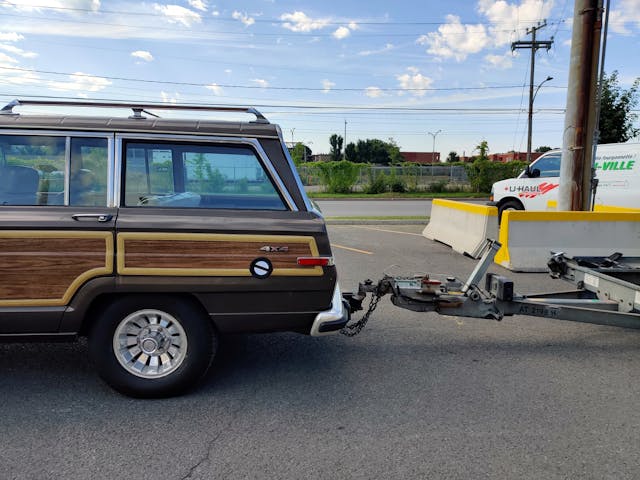



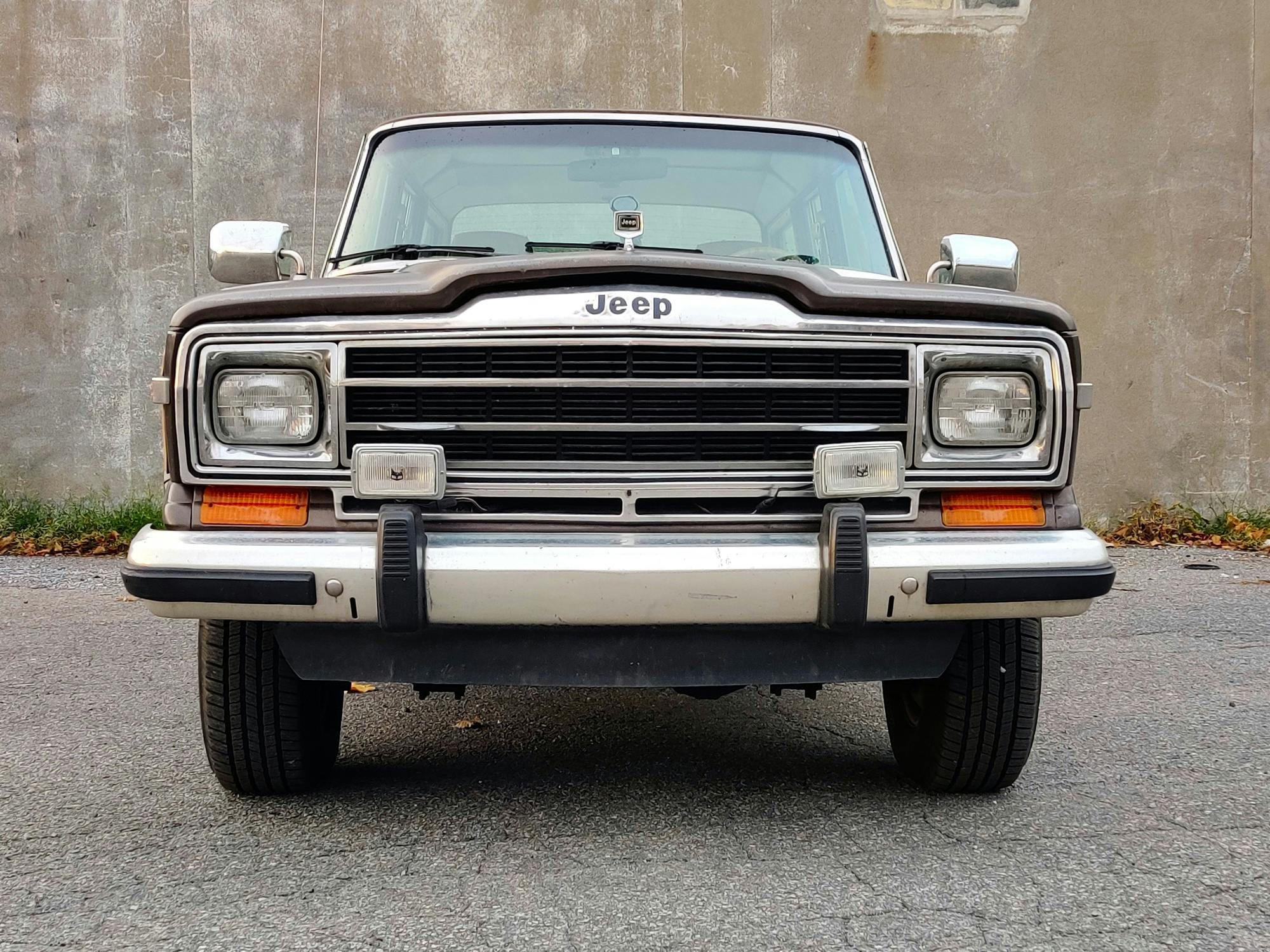
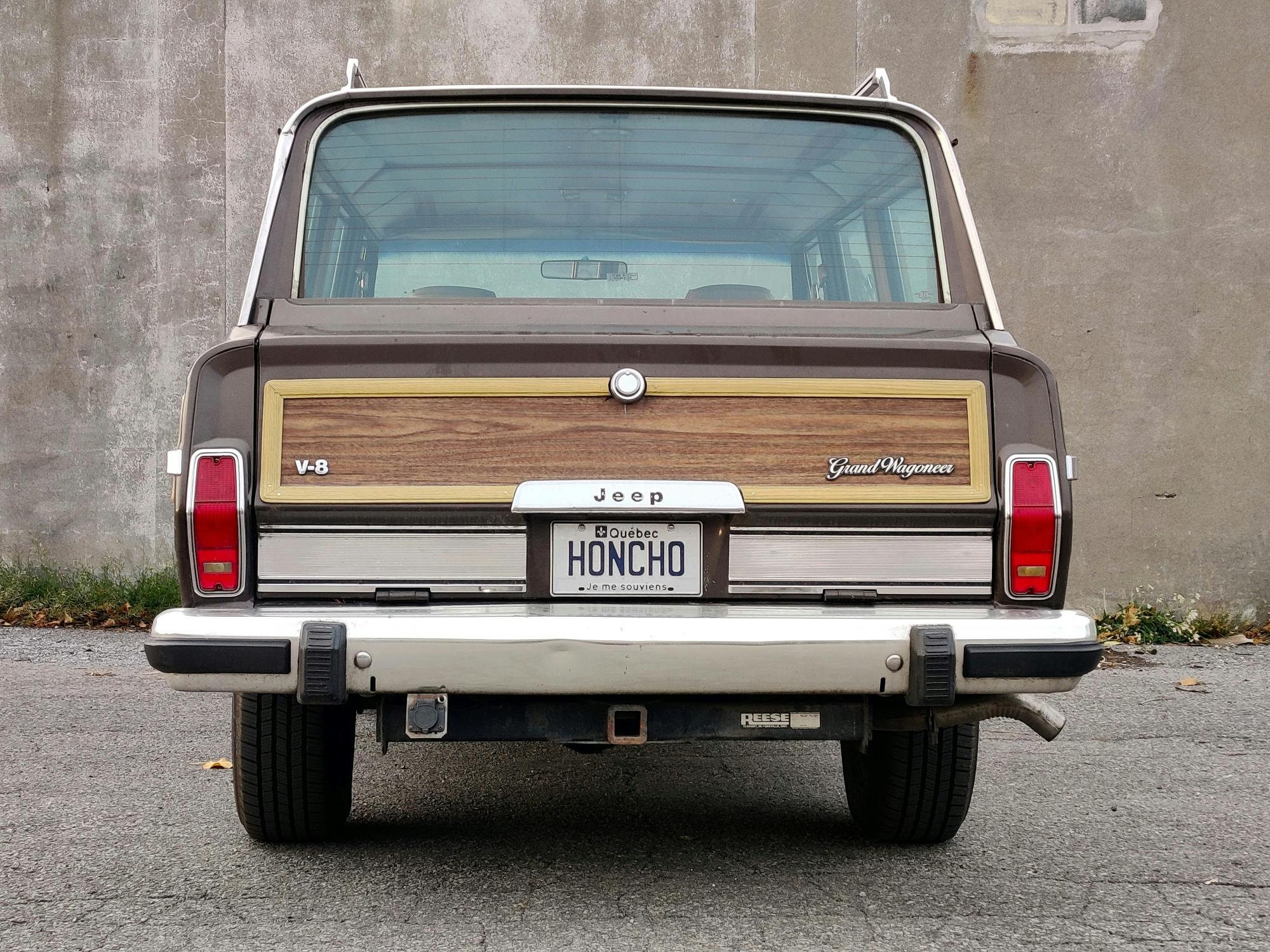

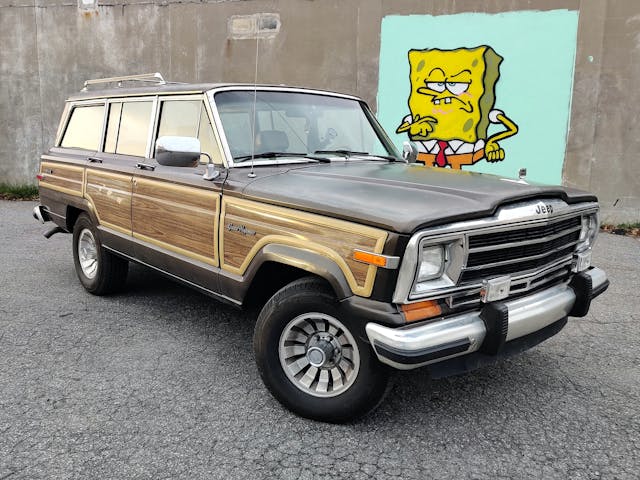

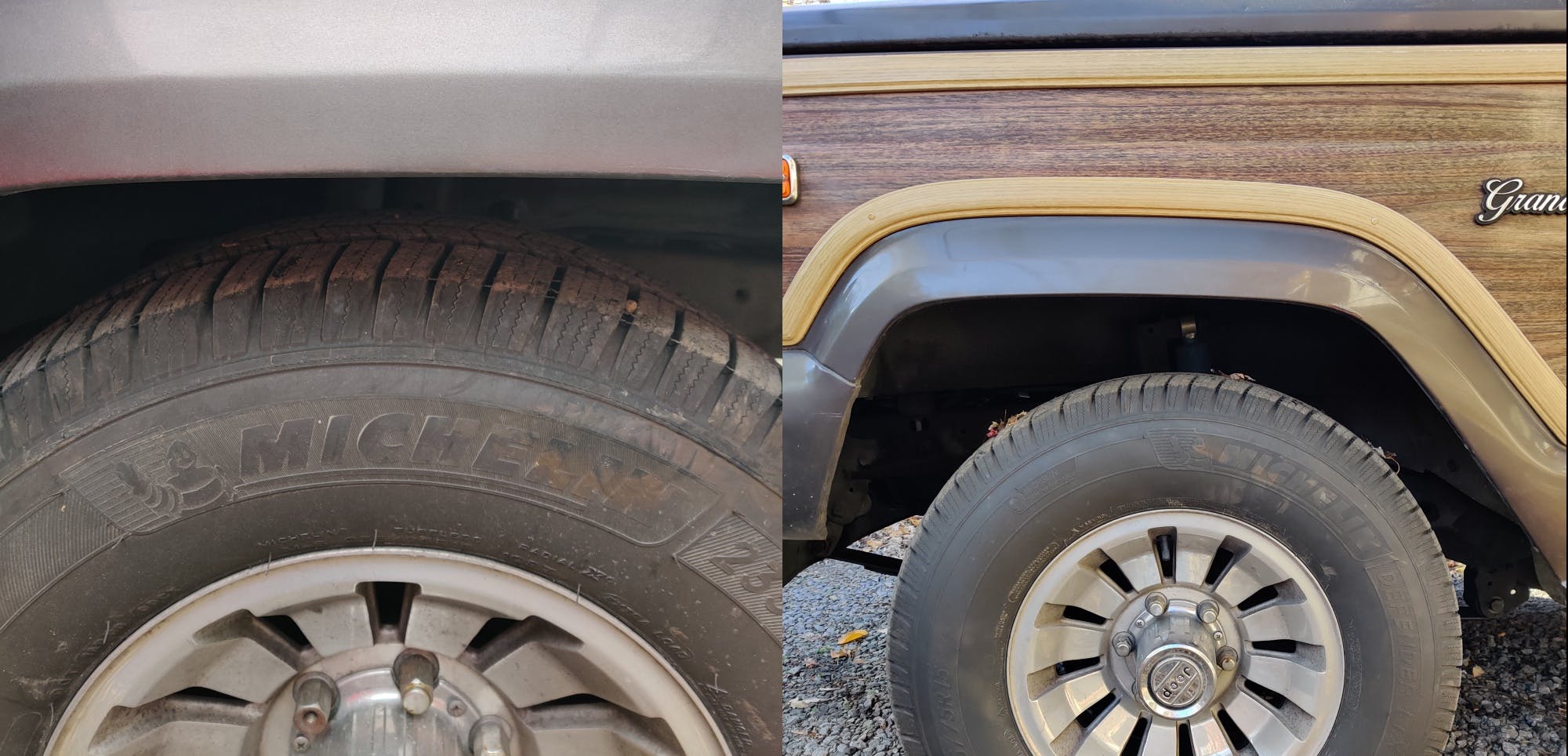
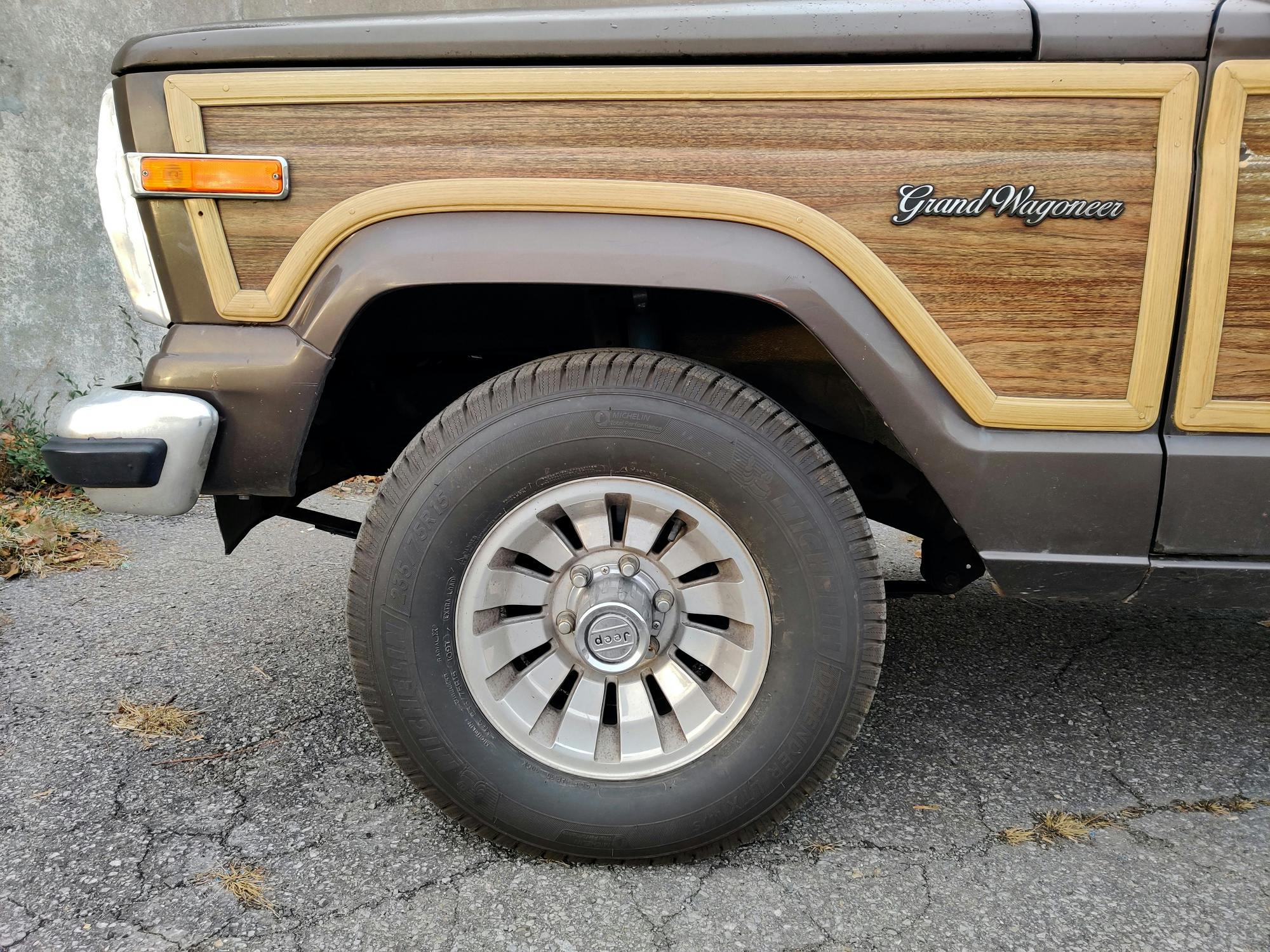
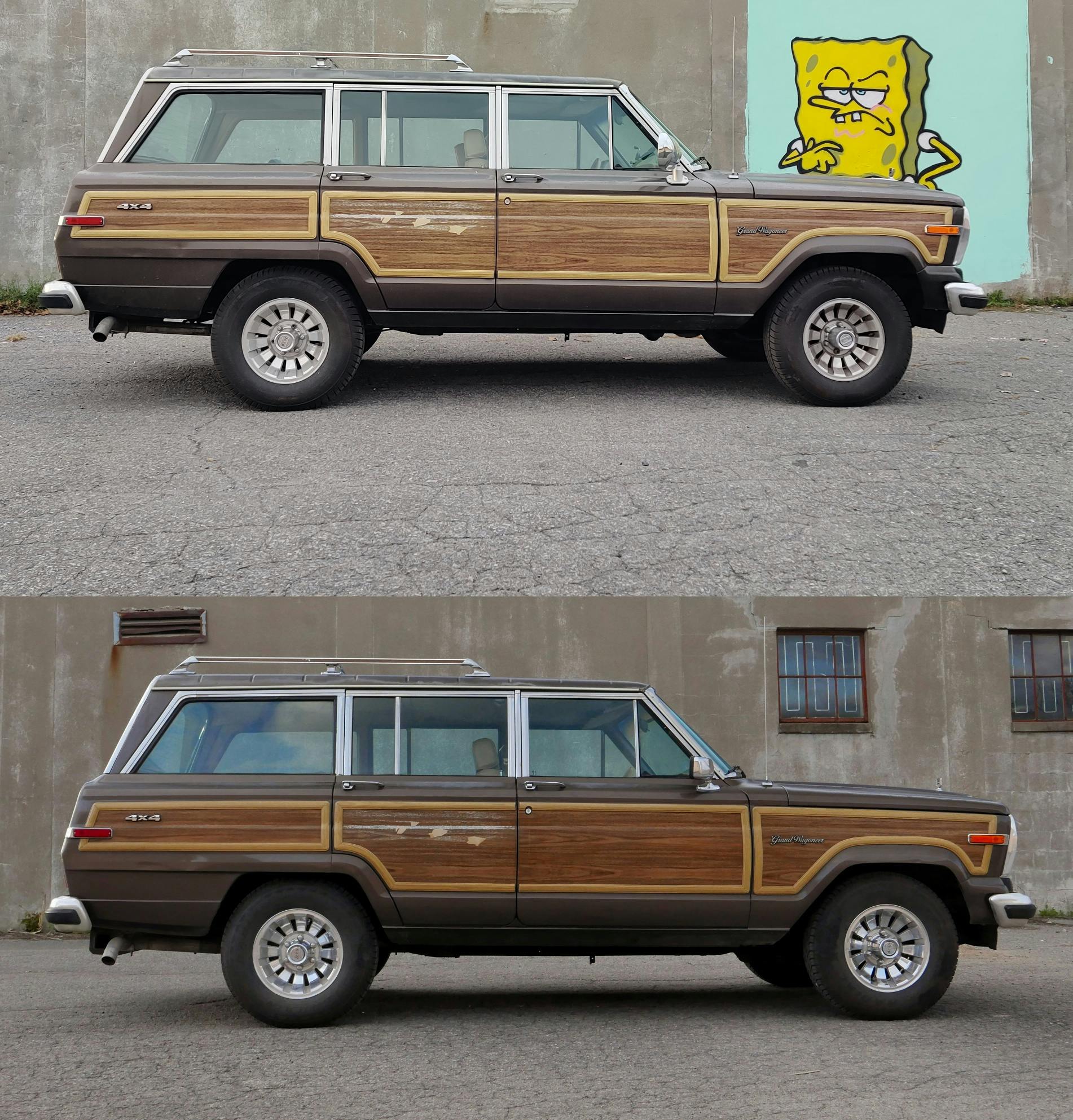








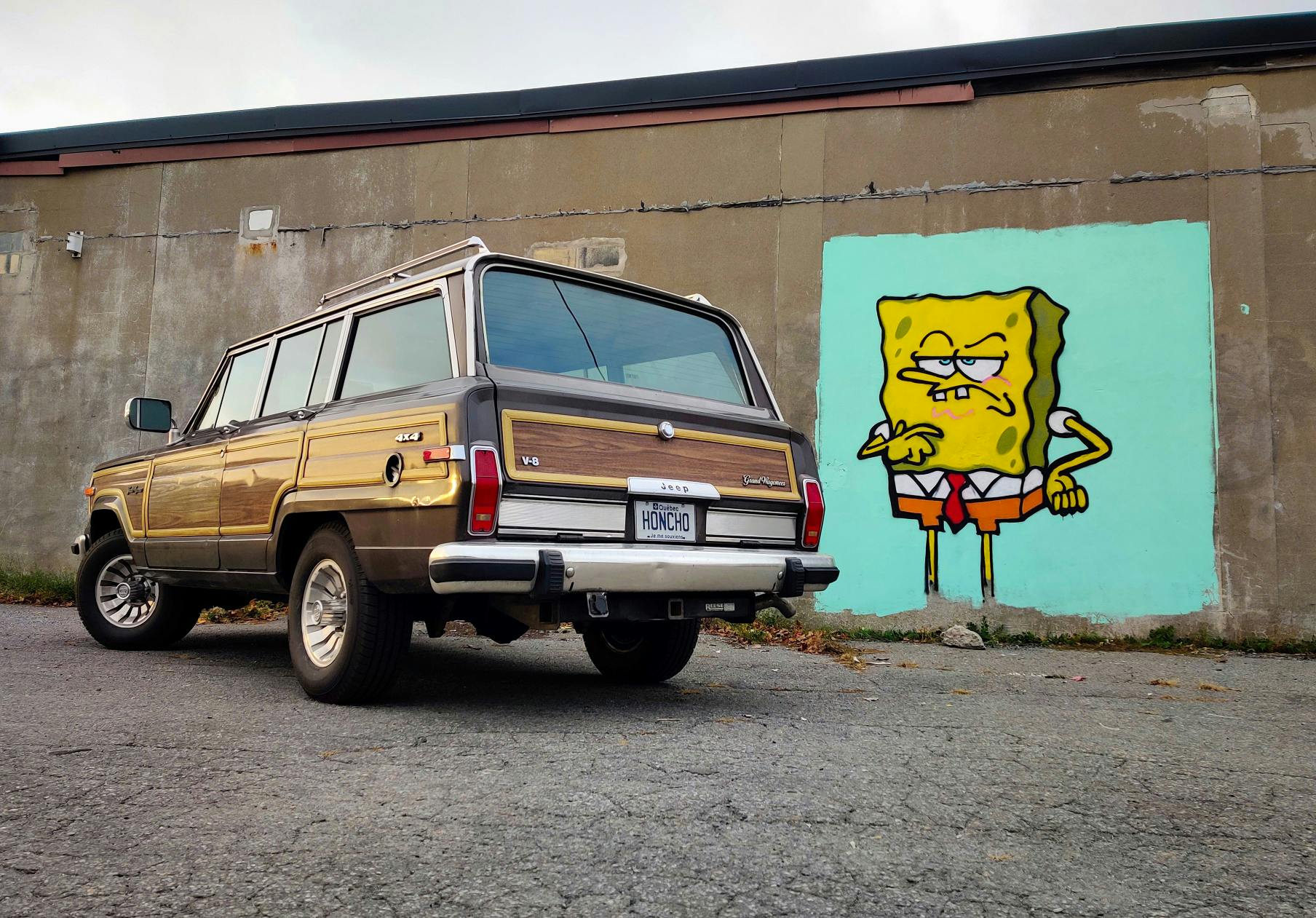
Great truck. I am a huge fan of full size Jeeps, and the “Honcho” license plate is great (memories of the J-10 Honcho as my favorite truck ever). I have successfully beefed up rear suspensions using Timbrens which are quick and simple. Certainly the weight distribution hitch is the main solution for distributing the tongue weight to both the tow vehicle front axle (as you stated) and also to the trailer axles as well. You seem to have a well-sorted truck, and I hope you can keep it on the road for many years.
Thank you for the kind words about the Jeep 🙂 It’s such a fun daily driver.
I like your Jeep project, but I’ll go ahead and be “that guy” since no one else has commented on it…
Weight distribution hitches are great for campers where the weight load is in fixed positions on the trailer, but I’ve found them to be much less useful with cargo loads. From the pictures it looks like you had plenty of room to move the Z car further back so that more of its weight would be over the axle instead of on the trailer tongue. If the rented trailer had some weird feature like a fixed chock point for the front wheels, the car could have been loaded backwards (assuming the front end is heavier than the rear).
Glad the Jeep got new springs, but the cheapest and quickest load distribution system is the person loading the trailer. Tongue weight, axle weight, GVWR, GCVWR- – they can all get pretty complicated. I used to have a homemade race car trailer built from plans a guy bought. He sold the trailer without using it complaining that he would need to by a new 1-ton truck to tow it because it was so heavy. In the process of titling it, I weighed it and it came in right at 2500 lbs. The problem was it had 700 lbs of tongue weight because of the built-on tool cabinet/closet and two-row tire rack. When you put a car on the back of it, it balanced back every time and towed beautifully.
The U-Haul trailers have a factory chock at the front, like you mentioned, but they also make use of a basket-net type of tie-down designer to pass over the front wheels. I have to drive the car over this and then secure it forward of the front axles using come-alongs built into the trailer.
I’ve tried using my own tie-downs on the trailer, but U-Haul doesn’t provide that many great spots to hook onto for a vehicle with the wheelbase of my Datsun.
I’ve considered backing it onto the trailer (not at easy thing to do alone, on a city street, especially at my ride height), but then I end up with most of the mass at the rear of the trailer acting like a pendulum. I am not sure that doesn’t solve one problem in favor of another.
The tough thing there is that uHaul trailers are built to the lowest common denominator of user. That means there is a whole team of people in orange and white uniforms thinking up ways of making sure that anyone who decides they should tow a car–and has an appropriate vehicle rated to do so–can. This means the trailer design favors tongue weight as that seems to have been deemed safer by the uHaul engineers. It’s other cargo trailers are the same way if you look at axle placement. It’s virtually impossible to not have any tongue weight on one of its trailers.
It’s also why uHaul won’t rent you a trailer if you say you are towing a Chevrolet Corvair, citing the weight distribution of the rear-engine car is too much rearward and they cannot trust the end user to be smart enough to know or have the ability to back the car onto the trailer.
If you tow more than occasionally, a quality trailer puts the heavy, short-deck UHauls to shame.
Electric brakes alone is so much better.
I agree with you. Unfortunately, I live in a fairly large city, near downtown, and it’s a constant struggle to find parking for my various cars. A trailer of my own is right now out of the question, from a storage perspective.
It has been my experience, mostly wt old Chryslers, that people often replace the rear leaf springs with springs of greater arch than th original. That makes the car stand taler than it did when new, and as a consequence not handle like it should. What’s worse, on old Chryslers, is that people then crank up the torsion bars in the front to make the car stand level, which really makes the car handle poorly.
Older cars sat close to the groun, while modern cars seem to stand taller (most of them). So often people think taller is better. On a 1960 Chrysler, it isn’t.
If you are replacng leaf springs, or any springs, make sure that the car is at the proper height when completed.
Very good points – and these springs are factory ride height.
We aren’t using bias ply tires anymore either. So tires, shocks, and springs ALL make them handle completely differently.
For anyone wondering what the part number fir nee FSJ grand wagoneer springs are. Its 97-400 depending on which you want. Youll find the corrosponding from and rear based on these numbers.
Guy shoulda mentioned this in his post. Also BJs isnt thr only place that sells springs… 97-402 were the ones i got as they have extra load capacity versus originals.
Fyi to the guy calling the fsj a 1969 chrysler.. kaiser built thrm then amc.. chrysler only had a hand on it for 6 years.
Also gvw of a wagoneer is 6200-6500lbs.. Its a lot more than the smaller suvs like the zj and xj
I didn’t even read the entire article, and I’ll admit that I hope this idea will prove to be a total failure. Then, I’m going to reiterate something I said in response to a prior article about this rig: when you decide it’s a bust and want to unload it, give me a jingle and let’s talk (I would LOVE it to be in my stable). 😋
This cracked me up! 😀 😀
This cracked me up! 😀 😀
Not sure if Sponge Bob is amused. Looking good!
In 1984 me and 3 of my buddies headed to Labrador to go fishing for a week in my 1976 Jeep Cherokee Chief, by the way you should know 15 cases of beer, enough cold weather gear for early June, fishing gear for 7 days of fishing, food for 4 hungry guys. Leaving central Maine it was a white knuckle ride up through Maine, Quebec, following the St Lawrence seaway to Sept Isle. Found a very capable garage there that built new set rear springs that took care of all scary ride. You need new springs!
I have only towed with trailers occasionally but my understanding has always been that the goal is 60/40 tongue/trailer axle as ball hitches have comparatively very little strength in a negative tongue weight situation.
Motor Week’s slalom test is cringeworthy?
It’s definitely cringe-worthy for the Grand Wagoneer – check out the video.
https://www.youtube.com/watch?v=g0RV2QG3nPk
For anyone wondering what the part number fir nee FSJ grand wagoneer springs are. Its 97-400 depending on which you want. Youll find the corrosponding from and rear based on these numbers.
Guy shoulda mentioned this in his post. Also BJs isnt thr only place that sells springs… 97-402 were the ones i got as they have extra load capacity versus originals.
Benjamin, I appreciate the article. I discovered the same problems hauling a 12ft u-haul trailer of household crap a thousand miles. My grand-saggin-wagon is in serious need of new springs after 36 years, so I can sympathize.
I’ve been researching BJ’s US-made stock-height and 2.5″ lift spring kits and I’m curious if the stock-height springs you had installed showed any evidence of the driver side sitting any lower due to the added weight of the driver-side-mounted gas tank, the rear-located spare tire, etc. Also, were there any markings on the springs to tell you which US company actually made them?